There’s nothing quite like climbing into a bed with clean, fresh bedding after a long day – we all know how good that feeling is. Keeping your duvet cover and bedding fresh is essential not only for hygiene but also for maintaining a comfortable sleep environment and extending the lifespan of the bedding itself. From choosing the right duvet cover to developing a regular cleaning routine, there are plenty of ways to keep your bedding looking and feeling spectacular. So, snuggle up and have a read of our bedding maintenance guide…
How to choose the right duvet cover
Choosing the right duvet cover is the first step in maintaining clean and fresh bedding. Opt for a duvet cover made of high-quality, durable fabric and easy to care for. Look for materials like bamboo or linen, which are breathable, hypoallergenic, and nicely durable. Consider the style and design that suits your preferences and bedroom decor, as this will make you more likely to take pride in keeping it clean – and we all love a bit of coherent decor. Keeping duvet covers clean is key to ensuring they look good for longer.
Regular cleaning routine
Establishing a regular cleaning routine for your duvet cover is the best place to start when it comes to bedding care for beginners. Generally, it is recommended to wash your duvet cover every one to two weeks, depending on personal preference and lifestyle. You should prioritise it, and it helps to have a few bedding sets so you can pop a fresh one on while doing the laundry.
Follow the care instructions provided by the manufacturer to ensure you’re sticking to the right duvet cover cleaning methods. Before popping your bedding in the machine, pre-treat any stains – read on to find out how. You can hand wash bedding, too, but as it’s such a big item and can safely be machine-washed, it makes sense to do so. Be sure to use a gentle, hypoallergenic detergent and wash in cold or lukewarm water to prevent shrinkage or damage to the fabric. Dry outside (when it’s warm enough!) for the best results.
Washing and storing duvet covers properly is important, too; when not in use, get them washed and dried, then store them somewhere cool and dry to avoid mould and mildew. You should replace your bedding every few years, especially if you notice it looking worn or if there are any holes and stubborn stains. Bamboo duvet covers get softer with every wash, making them a brilliant, long-lasting choice.

Stain removal techniques
Accidents happen, and stains on your duvet cover are inevitable, especially if you’re prone to snacking in bed, as many of us are. Duvet cover stain removal is important, and knowing how to do it is crucial for keeping your bedding fresh. Treat food or beverage stains immediately by blotting with a clean cloth and using a gentle stain remover or a mixture of mild soap and water. For grease stains, sprinkle baking soda (a brilliant natural stain remover) onto the area and let it sit for a while before machine washing. Other natural stain removers include distilled white vinegar, corn starch, and even milk; these are some bedding hygiene essentials for your shopping list. Try to prevent stains as best as possible by not letting pets onto the bed and cutting down on those midnight snacks… this will help you sleep better, too.
Tips for allergy sufferers
Maintaining clean and fresh bedding is ideal for those who suffer from allergies, eczema, hay fever and sensitive skin. Hypoallergenic bedding materials, like bamboo, are perfect – not only does bamboo bedding feel delightful on the skin, but it’s genuinely good for you, too. If you do have allergies, you might want to wash your bedding more often than normal; allow your duvet and mattress to breathe in between taking your bedding off and putting fresh sheets on, and take some time once a month or so to hoover the bed itself to ensure it remains dust-free. These are some of the best bedding freshness hacks out there.
How to keep your bedding fresh and clean
Fresh bedding is a firm favourite for many of us hoping for a good night’s sleep, so it’s something you should definitely pay attention to; keeping your bedding clean helps it last longer, makes your sleep more hygienic, enhances the look of your bedroom and generally makes you feel better. A great sleep is key to feeling happy and healthy, and that starts with having the best bedding possible – so let this be your reminder to change your sheets today if you’ve left it too long! Hopefully these duvet cover care tips will ensure you stay sleeping sweet…
FAQ
1. How often should I wash my duvet cover?
Washing your duvet cover every 2-4 weeks is a good rule of thumb, but it may vary based on personal preference and usage.
2. Can I wash my duvet cover with the duvet inside?
Generally, it's best to remove the duvet before washing the cover. However, check the care instructions for specific guidance, as some duvets can be machine-washed.
3. What's the best way to remove stains from a duvet cover?
Treat stains promptly with a stain remover or a mixture of baking soda and water. Always check the care label for specific stain removal instructions.
4. Should I iron my duvet cover?
Ironing your duvet cover is optional and depends on your preference. Most duvet covers are designed to look best when smoothed out but not necessarily ironed.
5. How do I prevent my duvet cover from wrinkling after washing?
Removing the duvet cover from the dryer while it's slightly damp and folding or placing it on the bed immediately can help prevent wrinkles.
6. What's the best way to store a duvet cover when not in use?
Store your duvet cover in a cool, dry place away from direct sunlight. Consider using a cotton storage bag to protect it from dust.

![[MattressTopper] Panda London Memory Foam Bamboo Mattress Topper package box](http://pandalondon.com/cdn/shop/files/Bamboo_Mattress_Topper_Package_Box.webp?v=1742301823&width=1500)
![[MattressTopper] Panda London Memory Foam Bamboo Mattress Topper on the floor](http://pandalondon.com/cdn/shop/products/Panda-Memory-Foam-Bamboo-Mattress-Topper-Yoga-e1624045454555.jpg?v=1758795458&width=1000)
![[MattressTopper] Bamboo Mattress Topper Lifestyle Image with Memory Foam Pillows Product Page](http://pandalondon.com/cdn/shop/files/Bamboo_Mattress_Topper_Lifestyle_Image_with_Memory_Foam_Pillows_Product_Page.webp?v=1758795458&width=800)
![[MattressTopper] Bamboo Mattress Topper Lifestyle Image with Bamboo Pillows In the Garden room Product Page](http://pandalondon.com/cdn/shop/files/Bamboo_Mattress_Topper_Lifestyle_Image_with_Bamboo_Pillows_In_the_Garden_room_Product_Page.webp?v=1758795458&width=800)
![[MattressTopper] Panda London Memory Foam Bamboo Mattress Topper side](http://pandalondon.com/cdn/shop/files/Mattress_Topper_Isolated_-_resized.jpg?v=1758795458&width=800)
![[HybridMattressPro] Main Image for Hybrid Bamboo Mattress Pro with all awards](http://pandalondon.com/cdn/shop/files/Hybrid_Bamboo_Mattress_Pro_Main_product_Image_with_awards.webp?v=1753971649&width=1000)
![[HybridMattressPro] Breathable Hybrid Bamboo Mattress](http://pandalondon.com/cdn/shop/products/Breathable-Hybrid-Bamboo-Mattress.jpg?v=1753971649&width=1920)
![[HybridMattressPro] Hybrid Bamboo Mattress Pro Cover Zip](http://pandalondon.com/cdn/shop/files/Hybrid_Bamboo_Mattress_Cover.jpg?v=1753971649&width=800)
![[HybridMattressPro] Panda Hybrid Bamboo Mattress Pro](http://pandalondon.com/cdn/shop/files/Hybrid_Bambo_Memory_Foam_Mattress_-_BioCell_Foam_x.jpg?v=1755095108&width=800)
![[HybridMattressPro] Couple on a Hybrid Bamboo Mattress Pro](http://pandalondon.com/cdn/shop/files/Hybrid_Bamboo_Mattress_Couple.jpg?v=1753971649&width=800)
![[CloudDuvet] Panda London The Cloud Bamboo Duvet Packaging](http://pandalondon.com/cdn/shop/products/Panda-London-The-Cloud-Bamboo-Duvet-Panda-Life-scaled_00a651ad-4ca3-4105-b520-12a94c1a4f71.jpg?v=1713363286&width=1920)
![[CloudDuvet] Panda London The Cloud Bamboo Duvet Rolled](http://pandalondon.com/cdn/shop/products/Duvet-Listing-Images03.jpg?v=1713361452&width=1000)
![[CloudDuvet] Panda London The Cloud Bamboo Duvet Girl Huggin a Duvet on the Bed](http://pandalondon.com/cdn/shop/files/Cloud_Bamboo_Duvet_-_Lady_Hugging_it_on_Bed_LifestyleImage.jpg?v=1719327585&width=1000)
![[CloudDuvet] Panda London The Cloud Bamboo Duvet Guy In the Air with Cloud Bamboo Duvet](http://pandalondon.com/cdn/shop/files/GuyonaHybridBambooMattresswithCloudDuvet.jpg?v=1743097928&width=2000)
![[CloudDuvet] Panda Cloud Duvet Winter on the bed lifestyle image](http://pandalondon.com/cdn/shop/files/Panda_Cloud_Duvet_Winter_on_the_Bed_Lifestyle-1_image.jpg?v=1747994959&width=1000)
![[BBWhite] White 100% Bamboo Bedding](http://pandalondon.com/cdn/shop/files/Pure_White_Full_Bed.webp?v=1719581797&width=1000)
![[BBWhite] White 100% Bamboo Bedding Texture](http://pandalondon.com/cdn/shop/files/100_Bamboo_Bedding_-_Pure_White_-_Close_Up_02.webp?v=1762879591&width=1000)
![[BBWhite] White 100% Bamboo Bedding Woman in bed sleeping](http://pandalondon.com/cdn/shop/files/100-Bamboo-Bedding-Set-Pure-White-BB.webp?v=1762879591&width=768)
![[BBWhite] White 100% Bamboo Bedding Woman Duvet cover buttons](http://pandalondon.com/cdn/shop/files/hand_and_buttons_1.webp?v=1762879591&width=1000)
![[BBWhite] White 100% Bamboo Bedding Woman in bed looking and smiling-](http://pandalondon.com/cdn/shop/files/SatonMadeBed-White100_BambooBedding-white_-_BB_SideShot1000x1000.webp?v=1762879591&width=980)
![[BBUrbanGrey] Urban Grey 100% Bamboo Bedding](http://pandalondon.com/cdn/shop/files/Made_Bed_-_Urban_Grey_-_Wide_Shot_2_1_1.webp?v=1762880019&width=1000)
![[BBUrbanGrey] Cloud Duvet Urban Grey 100% Bamboo Bedding Set](http://pandalondon.com/cdn/shop/files/Cloud_Duvet_-_Grey_-_Close_up_2.webp?v=1762880019&width=1000)
![[BBUrbanGrey] Urban Grey 100% Bamboo Bedding Set Woman sitting on the bed](http://pandalondon.com/cdn/shop/files/Sat_in_Bed_-_Grey_100__Bamboo_Bedding_-_Wide_Shot.webp?v=1762880019&width=1000)
![[BBUrbanGrey] Urban Grey 100% Bamboo Bedding Set Woman Duvet buttons Panda London](http://pandalondon.com/cdn/shop/files/hand_buttons_grey_bedding_1.webp?v=1762880019&width=1000)
![[BBUrbanGrey] Woman Sitting on the Bamboo Bedding with coffee](http://pandalondon.com/cdn/shop/files/SatonMadeBed-White100_BambooBedding-SideShot1000x1000.jpg?v=1762880019&width=1000)
![[BBNavyBlue] Deep Sea Navy Blue 100% Bamboo Bedding](http://pandalondon.com/cdn/shop/files/Made_Bed_-_Navy_-_Wide_Shot_3_copy.webp?v=1762879591&width=1000)
![[BBNavyBlue] Deep Sea Navy Blue 100% Bamboo Bedding Texture](http://pandalondon.com/cdn/shop/files/Cloud_Duvet_-_Navy_-_Close_up_2.webp?v=1762880019&width=1000)
![[BBNavyBlue] Deep Sea Navy Blue 100% Bamboo Bedding Woman Sitting on the bed](http://pandalondon.com/cdn/shop/files/Sat_Up_in_Bed_-_Navy_100__Bamboo_Bedding_-_Hands_on_Bed.webp?v=1762880019&width=1000)
![[BBNavyBlue] Deep Sea Navy Blue 100% Bamboo Bedding Duvet Cover Buttons](http://pandalondon.com/cdn/shop/files/Cloud_Duvet_Cover_Buttons_-_Deep_Sea_Navy.webp?v=1762880019&width=1000)
![[BBNavyBlue] Deep Sea Navy Blue 100% Bamboo Bedding Woman sitting on the bed looking away](http://pandalondon.com/cdn/shop/files/SatonMadeBed-White100_BambooBedding-SideShot1000x1000-001.webp?v=1762880019&width=980)
![[BBPink] Vintage Pink Blue 100% Bamboo Bedding](http://pandalondon.com/cdn/shop/files/Made_Bed_-_Pink_-_Wide_Shot_copy.webp?v=1762879591&width=1000)
![[BBPink] Vintage Pink Texture 100% Bamboo Bedding](http://pandalondon.com/cdn/shop/files/Cloud_Duvet_-_Pink_-_Close_up_2.webp?v=1762880019&width=1000)
![[BBPink] Vintage Pink Woman Sitting on the 100% Bamboo Bedding](http://pandalondon.com/cdn/shop/files/Sat_Up_in_Bed_-_Pink_-_Hands_on_Bed.webp?v=1762880019&width=1000)
![[BBPink] Vintage Pink Woman Sitting on the 100% Bamboo Bedding Duvet Cover](http://pandalondon.com/cdn/shop/files/Cloud_Duvet_Cover_Buttons_-_Vintage_Pink.webp?v=1762880019&width=1000)
![[BBPink] Vintage Pink Woman Sitting on the 100% Bamboo Bedding Woman looking far away](http://pandalondon.com/cdn/shop/files/SatonMadeBed-White100_BambooBedding-SideShot1000x1000-001_Vintage_Pink.webp?v=1762880019&width=980)
![[BBGrey] Light Grey 100% Bamboo Bedding](http://pandalondon.com/cdn/shop/files/Made_Bedding_in_Bedroom_-_Urban_Grey_-_Wide_Shot.webp?v=1762879591&width=1000)
![[BBGrey] Light Grey 100% Bamboo Bedding texture](http://pandalondon.com/cdn/shop/files/Texture17.webp?v=1762880019&width=1000)
![[BBGrey] Light Grey 100% Bamboo Bedding with Woman smiling](http://pandalondon.com/cdn/shop/files/Sat_Up_in_Bed_-_Grey_-_Hands_on_Bed.webp?v=1762880019&width=1000)
![[BBGrey] Light Grey 100% Bamboo Bedding with Duvet Cover buttons](http://pandalondon.com/cdn/shop/files/Cloud_Duvet_Cover_Buttons_-_Quiet_Grey.webp?v=1762880019&width=1000)
![[BBGrey] Light Grey 100% Bamboo Bedding with Woman smiling and sitting coffee](http://pandalondon.com/cdn/shop/files/SatonMadeBed-White100_BambooBedding-SideShot1000x1000-002-_Grey.webp?v=1762880019&width=980)
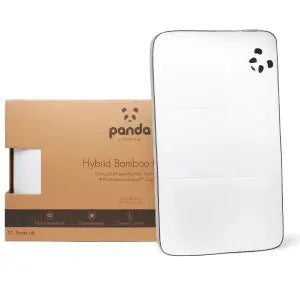 Hybrid Bamboo Pillow
Hybrid Bamboo Pillow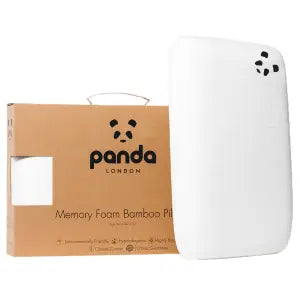 Memory Foam Bamboo Pillow
Memory Foam Bamboo Pillow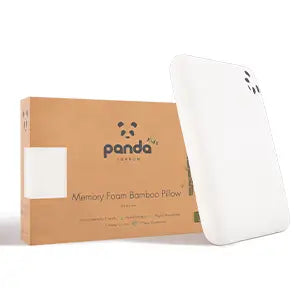 Kids Memory Foam Bamboo Pillow
Kids Memory Foam Bamboo Pillow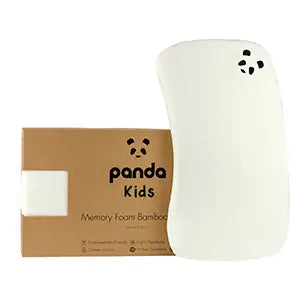 Baby Memory Foam Bamboo Pillow
Baby Memory Foam Bamboo Pillow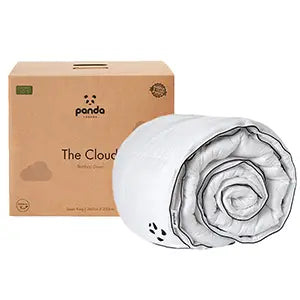 Panda Cloud Duvet
Panda Cloud Duvet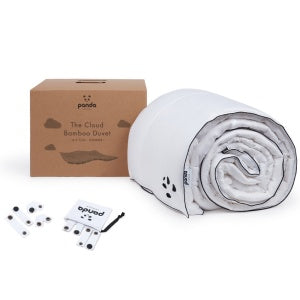 Bamboo Summer Duvet
Bamboo Summer Duvet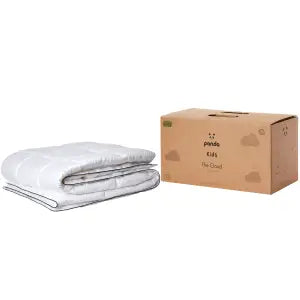 Kids Cloud Duvet
Kids Cloud Duvet
![[PureWhiteDC] White Duvet Cover 100% Bamboo Bedding buttons](http://pandalondon.com/cdn/shop/files/ButtonsDuvetCoverPureWhite.jpg?v=1714123697&width=2000)
![[PureWhiteDC] White Duvet Cover 100% Bamboo Bedding Package](http://pandalondon.com/cdn/shop/files/White_Duvet_Cover_Bamboo_Bedding_Package.webp?v=1721052312&width=1811)
![[PureWhiteDC] White Duvet Cover 100% Bamboo Bedding Stripes](http://pandalondon.com/cdn/shop/files/White_Duvet_Cover_Straps_100_Bamboo_Bedding.webp?v=1721052311&width=1000)
![[PureWhiteDC] White Duvet Cover 100% Bamboo Bedding Texture](http://pandalondon.com/cdn/shop/files/White_Duvet_Cover_100_Bamboo_Bedding_-_Pure_White_-_Duvet_Cover_Texture.webp?v=1721052312&width=1000)
![[PureWhiteDC] White Duvet Cover 100% Bamboo Bedding Woman buttons hands](http://pandalondon.com/cdn/shop/files/White_Duvet_Cover_-_Woman_hands_and_buttons.webp?v=1721052312&width=1000)
![[VintagePinkDC] Vintage Pink Duvet Cover 100% Bamboo Bedding buttons](http://pandalondon.com/cdn/shop/files/Vintage_Pink_Duvet_Cover_Bamboo_Bedding_Buttons.webp?v=1743769041&width=1000)
![[VintagePinkDC] Vintage Pink Duvet Cover 100% Bamboo Bedding package](http://pandalondon.com/cdn/shop/files/Vintage_Pink_Duvet_Cover_Package_Bamboo_Bedding.webp?v=1743769041&width=1811)
![[VintagePinkDC] Vintage Pink Duvet Cover 100% Bamboo Bedding Stripes](http://pandalondon.com/cdn/shop/files/Vintage_Pink_Duvet_Cover_Bamboo_Bedding_Stripes.jpg?v=1721052469&width=1000)
![[VintagePinkDC] Vintage Pink Duvet Cover 100% Bamboo Bedding Texture](http://pandalondon.com/cdn/shop/files/Vintage_Pink_Duvet_Cover_Bamboo_Bedding_Texture.webp?v=1743769041&width=1000)
![[VintagePinkDC] Vintage Pink Duvet Cover 100% Bamboo Bedding Woman In Bed Sitting](http://pandalondon.com/cdn/shop/files/Vintage_Pink_Duvet_Cover_Bamboo_Bedding_Woman_in_bed.webp?v=1721052470&width=1000)
![[NavyDC] Deep Sea Navy Duvet Cover 100% Bamboo Bedding Buttons](http://pandalondon.com/cdn/shop/files/Deep_Sea_Navy_Buttons_Duvet_Cover_Bamboo_Bedding.webp?v=1744115105&width=1000)
![[NavyDC] Deep Sea Navy Duvet Cover 100% Bamboo Bedding Package](http://pandalondon.com/cdn/shop/files/Deep_Sea_Navy_Package_Duvet_Cover_Bamboo_Bedding.webp?v=1744115105&width=1811)
![[NavyDC] Deep Sea Navy Duvet Cover 100% Bamboo Bedding Stripes](http://pandalondon.com/cdn/shop/files/Deep_Sea_Navy_Stripes_Duvet_Cover_Bamboo_Bedding.webp?v=1721053122&width=1000)
![[NavyDC] Deep Sea Navy Duvet Cover 100% Bamboo Bedding Texture](http://pandalondon.com/cdn/shop/files/Deep_Sea_Navy_Texture_Duvet_Cover_Bamboo_Bedding.webp?v=1744115105&width=1000)
![[NavyDC] Deep Sea Navy Duvet Cover 100% Bamboo Bedding Woman in bed sitting](http://pandalondon.com/cdn/shop/files/Deep_Sea_Navy_Woman_in_bed_Duvet_Cover_Bamboo_Bedding.webp?v=1721053123&width=1000)
![[GreyDC] Quiet Grey Duvet Cover 100% Bamboo Bedding Buttons](http://pandalondon.com/cdn/shop/files/Quiet_Grey_Cloud_Duvet_Cover_Bamboo_Bedding_Buttons.webp?v=1721053361&width=1000)
![[GreyDC] Quiet Grey Duvet Cover 100% Bamboo Bedding Package](http://pandalondon.com/cdn/shop/files/Quiet_Grey_Package_Duvet_Cover_Bamboo_Bedding_Buttons.webp?v=1721053360&width=1811)
![[GreyDC] Quiet Grey Duvet Cover 100% Bamboo Bedding Stripes](http://pandalondon.com/cdn/shop/files/Quiet_Grey_Stripes_Duvet_Cover_Bamboo_Bedding_Buttons.webp?v=1721053360&width=1000)
![[GreyDC] Quiet Grey Duvet Cover 100% Bamboo Bedding Texture](http://pandalondon.com/cdn/shop/files/Quiet_Grey_Texture_Duvet_Cover_Bamboo_Bedding_Buttons.webp?v=1721053361&width=1000)
![[GreyDC] Quiet Grey Duvet Cover 100% Bamboo Bedding Woman sitting in bed smiling](http://pandalondon.com/cdn/shop/files/Quiet_Grey_woman_in_bed_Duvet_Cover_Bamboo_Bedding_Buttons.webp?v=1721053361&width=1000)
![[UrbanGreyDC] Urban Grey Duvet Cover 100% Bamboo Bedding Buttons Woman hand](http://pandalondon.com/cdn/shop/files/Urban_Grey_Duvet_Grey_Bamboo_Bedding_buttons.webp?v=1721053513&width=1000)
![[UrbanGreyDC] Urban Grey Duvet Cover 100% Bamboo Bedding Buttons Package](http://pandalondon.com/cdn/shop/files/Duvet_Cover_Urban_Grey_Package_Bamboo_Bedding.webp?v=1721053512&width=1811)
![[UrbanGreyDC] Urban Grey Duvet Cover 100% Bamboo Bedding Stripes](http://pandalondon.com/cdn/shop/files/Urban_Grey_Duvet_Grey_Bamboo_Bedding_Stripes.webp?v=1721053512&width=1000)
![[UrbanGreyDC] Urban Grey Duvet Cover 100% Bamboo Bedding Buttons Texture](http://pandalondon.com/cdn/shop/files/Urban_Grey_Duvet_Grey_Bamboo_Bedding_Texture.webp?v=1721053513&width=1000)
![[UrbanGreyDC] Urban Grey Duvet Cover 100% Bamboo Bedding Buttons Woman sitting in bed smiling](http://pandalondon.com/cdn/shop/files/Urban_Grey_Duvet_Grey_Bamboo_Bedding_Woman_in_bed.webp?v=1721053513&width=1000)
![[GreyDCFrench] Duvet Cover Midnight Grey French Linen](http://pandalondon.com/cdn/shop/files/BambooandFrenchLinen-SilverLiningGrey-DuvetCoverPackaging.webp?v=1722000040&width=1818)
![[GreyDCFrench] Duvet Cover Grey French Linen Pillow](http://pandalondon.com/cdn/shop/files/Bamboo_and_French_Linen_-_Silver_Lining_Grey_-_Duvet_Cover_Pillows.webp?v=1722000595&width=1000)
![[GreyDCFrench] Duvet Cover Grey French Linen Pillow Set](http://pandalondon.com/cdn/shop/files/Bamboo_and_French_Linen_-_Silver_Lining_Grey_-_Duvet_Cover_Set.webp?v=1722000595&width=1000)
![[GreyDCFrench] Duvet Cover Grey French Linen Corner of](http://pandalondon.com/cdn/shop/files/Bamboo_and_French_Linen_-_Silver_Lining_Grey_-_Duvet_Cover_Corner.webp?v=1722000595&width=1000)
![[GreyDCFrench] Duvet Cover Grey French Linen Texture](http://pandalondon.com/cdn/shop/files/Bamboo_and_French_Linen_-_Silver_Lining_Grey_-_Duvet_Cover_Texture.webp?v=1722000595&width=1500)
![[NavyDCFrench] Duvet Cover Midnight Navy French Linen](http://pandalondon.com/cdn/shop/files/BambooandFrenchLinen-MidnightNavy-DuvetCoverPackaging.webp?v=1722000040&width=1818)
![[NavyDCFrench] Duvet Cover Midnight Navy French Linen Pillow](http://pandalondon.com/cdn/shop/files/Bamboo_and_French_Linen_-_Navy_-_Duvet_Cover_Pillow.webp?v=1722000803&width=1000)
![[NavyDCFrench] Duvet Cover Midnight Navy French Linen Set](http://pandalondon.com/cdn/shop/files/Bamboo_and_French_Linen_-_Navy_-_Duvet_Cover_Set.webp?v=1722000803&width=1000)
![[NavyDCFrench] Duvet Cover Midnight Navy French Linen Corner of](http://pandalondon.com/cdn/shop/files/Bamboo_and_French_Linen_-_Navy_-_Duvet_Cover_Corner.webp?v=1722000805&width=1000)
![[NavyDCFrench] Duvet Cover Midnight Navy French Linen Texture](http://pandalondon.com/cdn/shop/files/Bamboo_and_French_Linen_-_Navy_-_Duvet_Cover_Texture.webp?v=1722000803&width=1500)
![[NaturalDCFrench] Duvet Cover Midnight Natural French Linen](http://pandalondon.com/cdn/shop/files/BambooandFrenchLinen-Natural-DuvetCoverPackaging.webp?v=1722000040&width=1818)
![[NaturalDCFrench] Duvet Cover Midnight Natural French Linen Pillow](http://pandalondon.com/cdn/shop/files/Bamboo_and_French_Linen_-_Natural_-_Duvet_Cover_Pillow.webp?v=1722000917&width=1000)
![[NaturalDCFrench] Duvet Cover Midnight Natural French Linen Set](http://pandalondon.com/cdn/shop/files/Bamboo_and_French_Linen_-_Natural_-_Duvet_Cover_Pillow_Set.webp?v=1722000916&width=2000)
![[NaturalDCFrench] Duvet Cover Midnight Natural French Linen Corner of texture](http://pandalondon.com/cdn/shop/files/Bamboo_and_French_Linen_-_Natural_-_Duvet_Cover_Corner_if_texture.webp?v=1722000917&width=1000)
![[NaturalDCFrench] Duvet Cover Midnight Natural French Linen Texture](http://pandalondon.com/cdn/shop/files/Bamboo_and_French_Linen_-_Natural_-_Duvet_Cover_Texture.webp?v=1722000917&width=1500)
![[ForestGreen] Signature Plus Bamboo Duvet Cover Package](http://pandalondon.com/cdn/shop/files/Bamboo-Lyocell-Duvet-Cover-Green-Package.jpg?v=1715253572&width=768)
![[ForestGreen] Signature Plus Bamboo Duvet Cover Lifestyle Image](http://pandalondon.com/cdn/shop/files/Green-Bedding-Green-Duvet.jpg?v=1715253572&width=768)
![[ForestGreen] Signature Plus Bamboo Texture](http://pandalondon.com/cdn/shop/files/Green-Texture_a3822675-18cd-4a67-9707-bda67458231f-DC.jpg?v=1725886574&width=768)
![[ForestGreen] Signature Plus Bamboo Corner Image](http://pandalondon.com/cdn/shop/files/Green-PC-Corner-DC.jpg?v=1725886574&width=768)
![[ForestGreen] Signature Plus Bamboo Button](http://pandalondon.com/cdn/shop/files/Bamboo-Lyocell-Buttons-Green-DC.jpg?v=1725886575&width=768)
![[ForestGreen] Signature Plus Bamboo Full Bedding Set Lifestyle Image](http://pandalondon.com/cdn/shop/files/Green-Bedding-Full-Set-DC.jpg?v=1725886574&width=768)
![[Pebble] Duvet Cover SignaturePlus Bamboo Package](http://pandalondon.com/cdn/shop/files/LyocellBambooBeddingButtons.jpg?v=1725886713&width=768)
![[Pebble] Duvet Cover SignaturePlus Bamboo Lifestyle](http://pandalondon.com/cdn/shop/files/Pebble-Cream-Bedding-Duvet.jpg?v=1725886713&width=768)
![[Pebble] Duvet Cover SignaturePlus Bamboo Texture](http://pandalondon.com/cdn/shop/files/Pebble-Cream-Texture-DC.jpg?v=1725886574&width=768)
![[Pebble] Duvet Cover SignaturePlus Bamboo Corner](http://pandalondon.com/cdn/shop/files/Pebble-Cream-PC-Corner-DC.jpg?v=1725886574&width=768)
![[Pebble] Duvet Cover SignaturePlus Bamboo Button](http://pandalondon.com/cdn/shop/files/Pebble-Cream-Button-DC.jpg?v=1725886575&width=768)
![[Pebble] Duvet Cover SignaturePlus Bamboo Lifestyle Full Bedding](http://pandalondon.com/cdn/shop/files/Pebble-Cream-Bedding-Full-Set-DC.jpg?v=1725886575&width=768)
